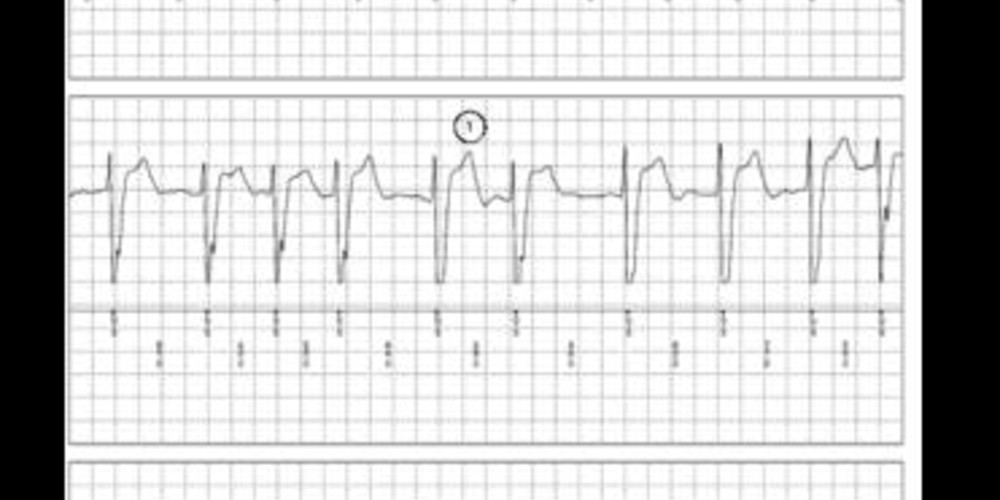Syncope in sick sinus syndrome
Tracing
Manufacturer Medtronic
Device ILR
Field Reveal DX / Reveal XT
N° 13
Patient
A 67-year-old man complained of recurrent syncope with perception of palpitation before losing consciousness. He has a history of treated systemic hypertension and concentric LV hypertrophy. The 12-lead ECG showed right bundle branch block and electrophysiological studies were negative. A Reveal DX was implanted.

Graph and trace
The patient suffered a syncopal event associated with convulsions; his wife used the activator to trigger a recording by the ILR.
- episode of AF with wide ventricular electrograms, irregular and morphologically similar to those recorded during sinus rhythm;
- prolonged asystole detected;
- recording triggered by the patient’s wife;
- resumption of a relatively regular, probably slow sinus rhythm, although the analysis of atrial activity is challenging (4); note the noise after the fall, the loss of consciousness and the sudden recovery.
Other articles that may be of interest to you





This is a typical ECG recording of AF, sinus dysfunction and long pause at the time of tachyarrhythmia termination. The palpitation was therefore related to AF, and syncope was related to the pause. From the standpoint of therapy, a CHADS 3 score in this patient justified the introduction of antithrombotic therapy. The management of syncope hinges on the adoption of 1 of 2 strategies. The first assumes that the pause is the consequence of the abrupt termination of AF, which the treatment must target. A study revealed, for example, that the ablation of pulmonary veins in these patients suppressed the recurrences of arrhythmia as well as syncope. The second strategy assumes that the pause after the end of an episode of AF is a manifestation of sinus node dysfunction, justifying the implantation of a permanent pacemaker. This patient presented with sinus bradycardia at 50 bpm at rest and some degree of chronotropic insufficiency. He received a pacemaker, which prevented recurrences of syncope, while AF was moderately well controlled by an antiarrhythmic regimen.